Narration
Based on what we have for the three mini games. We’ve added more narration to combine them into a single, cohesive storyline. Our main character is a cat with the roomba.
Scene 1: Feeding cat remotely
The first story is about remotely feeding a cat through a camera. The player needs to use gestures to pop balloons that drop dried fish treat.
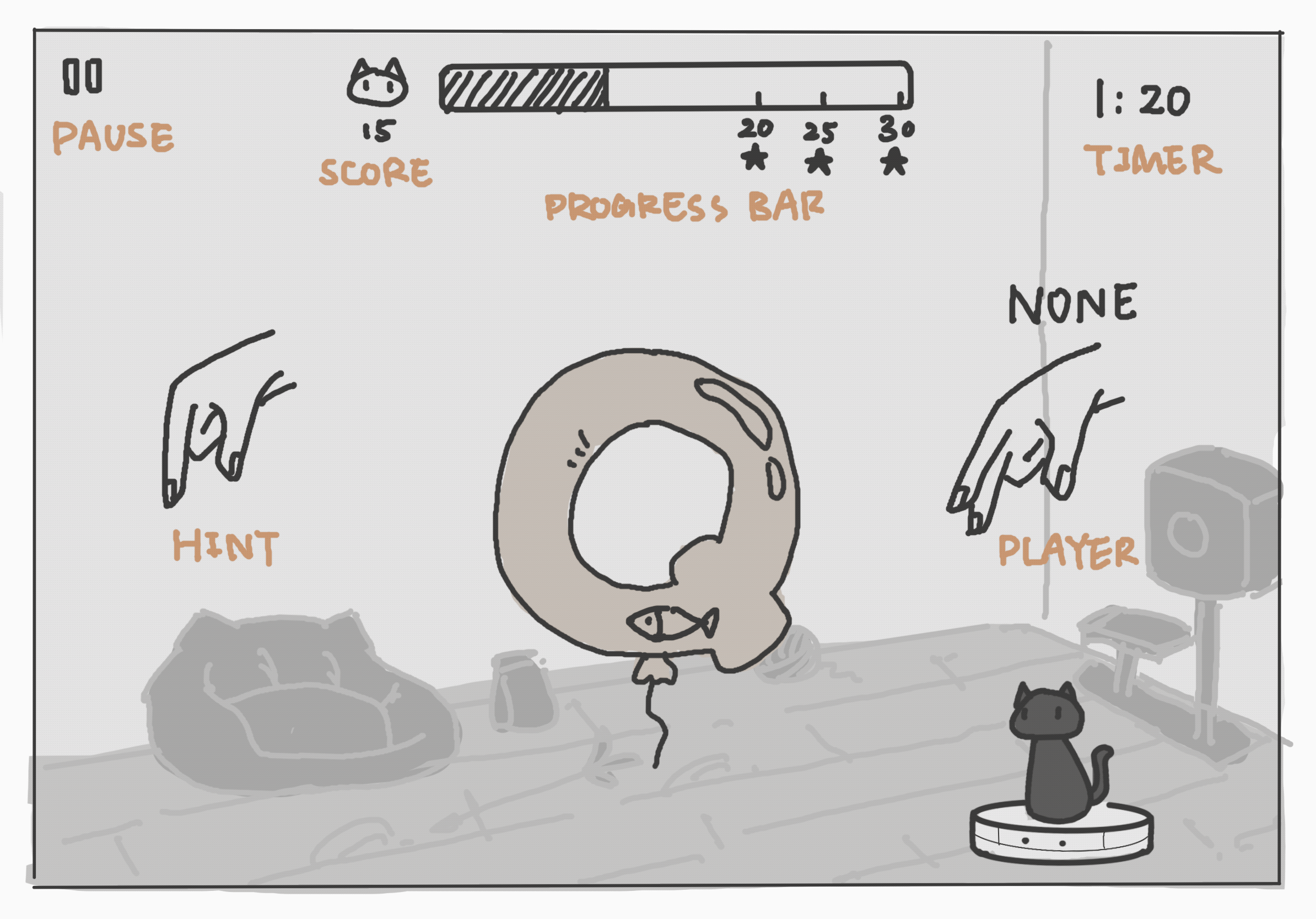
Scene 2: Clearing obstacles
The second story begins by the roomba carrying the cat out the door. The player then hacks into the roomba and needs to use gestures to clear obstacles in their path so that the cat won’t get hurt.
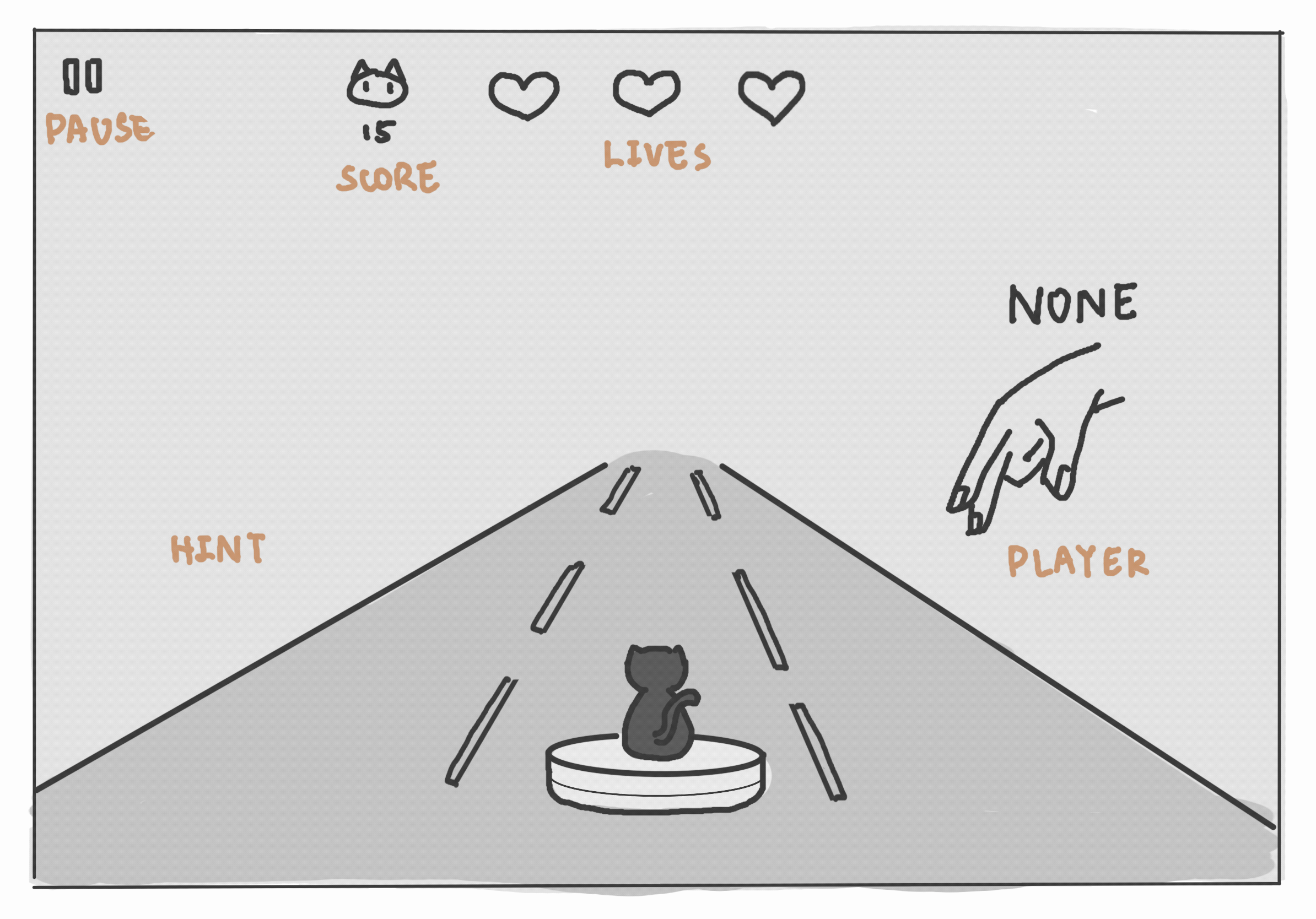
Scene 3: Hide and Seek
The third story has the cat hiding with the roomba in a picture. The player must spell out the names of different objects, move them aside, and find the kitten.
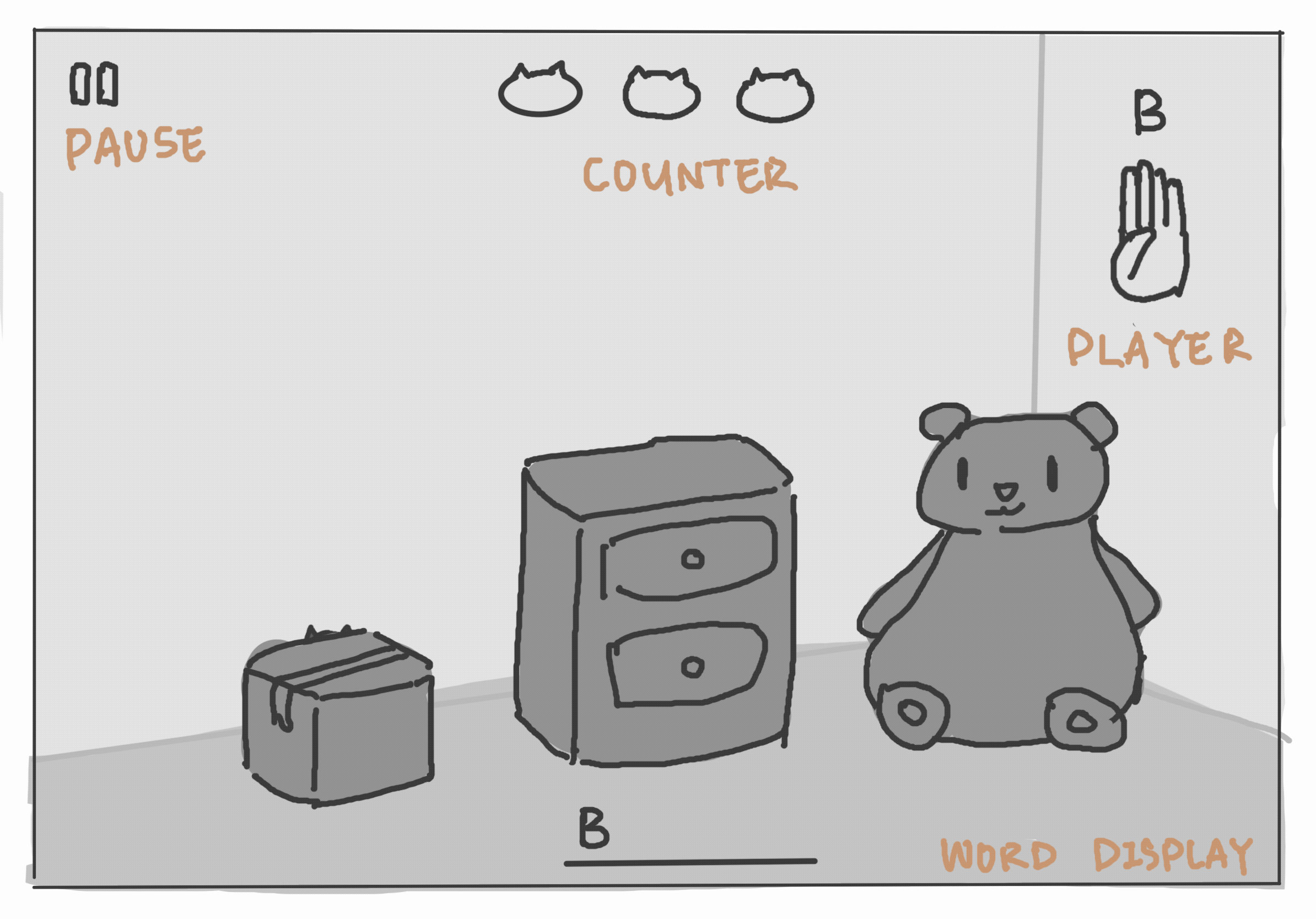
We’re still discussing on the third idea since it seems a little vague. We’ll try some paper prototypes while developing the first two games.
Art Update
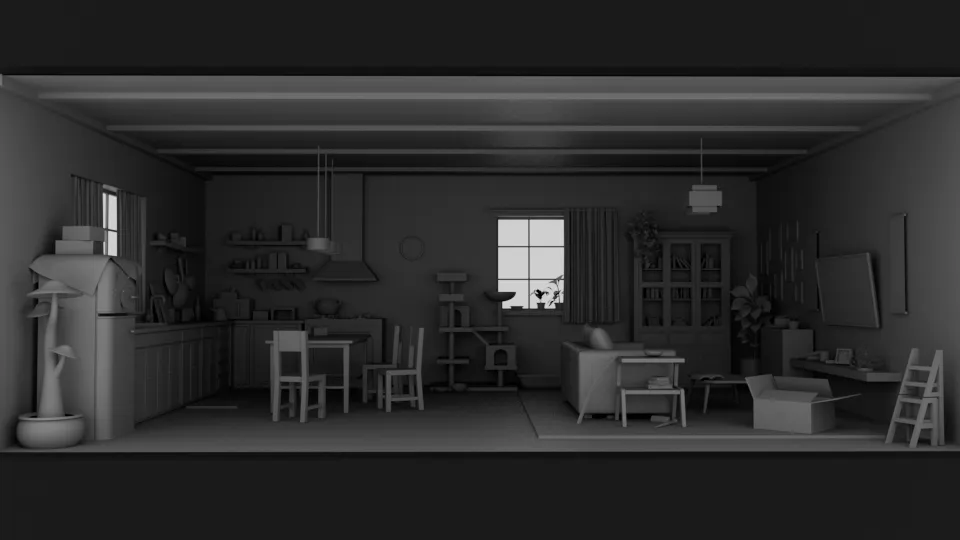
Design Iteration
Based on the feedback we received from quarter, we iterated our design mainly in the following three parts:
- Level Difficulty – to create a learning ramp
- Mini 1 & 2: the number of letters to select, eg.
- Beginner: 3-5, Intermediate: 8 – 12, Advanced: 20 – 26
- Mini 3: the object range, eg.
- Beginner: [tree, apple, banana, pineapple]
- Intermediate: [moon, mushroom, …]
- Advanced: [more varieties]
- Mini 1 & 2: the number of letters to select, eg.
- Star Rating – rewarding system
- Mini 1: the number of balloons (eg. 3 – ⭐, 10 – ⭐⭐, 30 – ⭐⭐⭐)
- Mini 2: running time (eg. 10s – ⭐, 45s – ⭐⭐, 100s – ⭐⭐⭐)
- Mini 3: how many catches (1 catch – ⭐, 2 catches – ⭐⭐, 3 catches – ⭐⭐⭐)
- Leaderboard – competition
- Sort separately by beginner, intermediate, advanced
- Consider multiple dimensions
Game Flow
We also spent one hour discussing the game flow, since the level difficulty also complicated the game system. Our current thoughts focus on giving players enough freedom to choose since we’re not creating a user profile for each player. The player will be able to choose the level difficulty (Beginner / Intermediate / Advanced) at the very beginning depending on their familiarity with sign language. For each difficulty level, there’re corresponding mini games to select, which creates a learning ramp for everyone. Regardless of their proficiency in sign language, every player can have their own learning path.
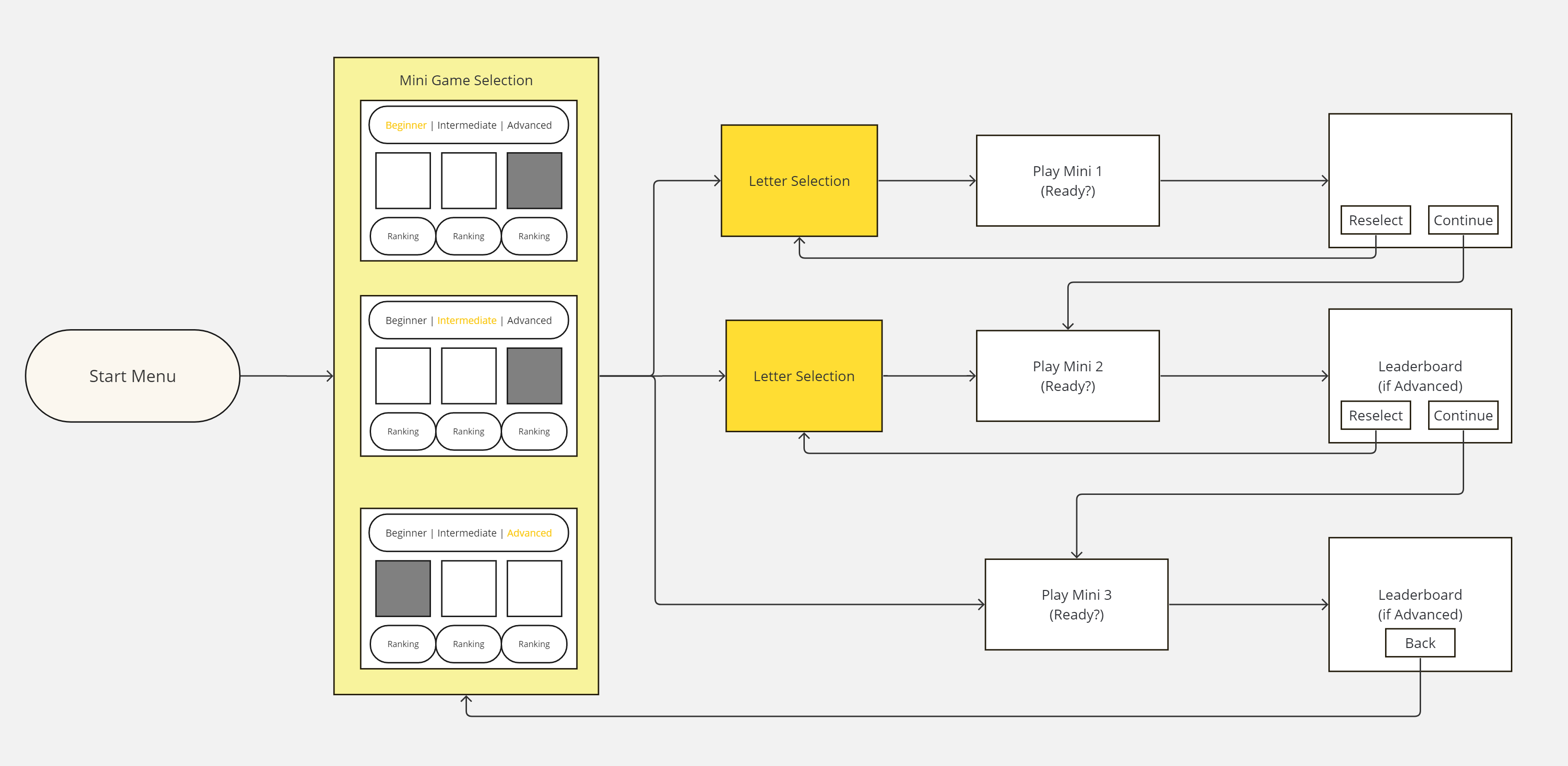
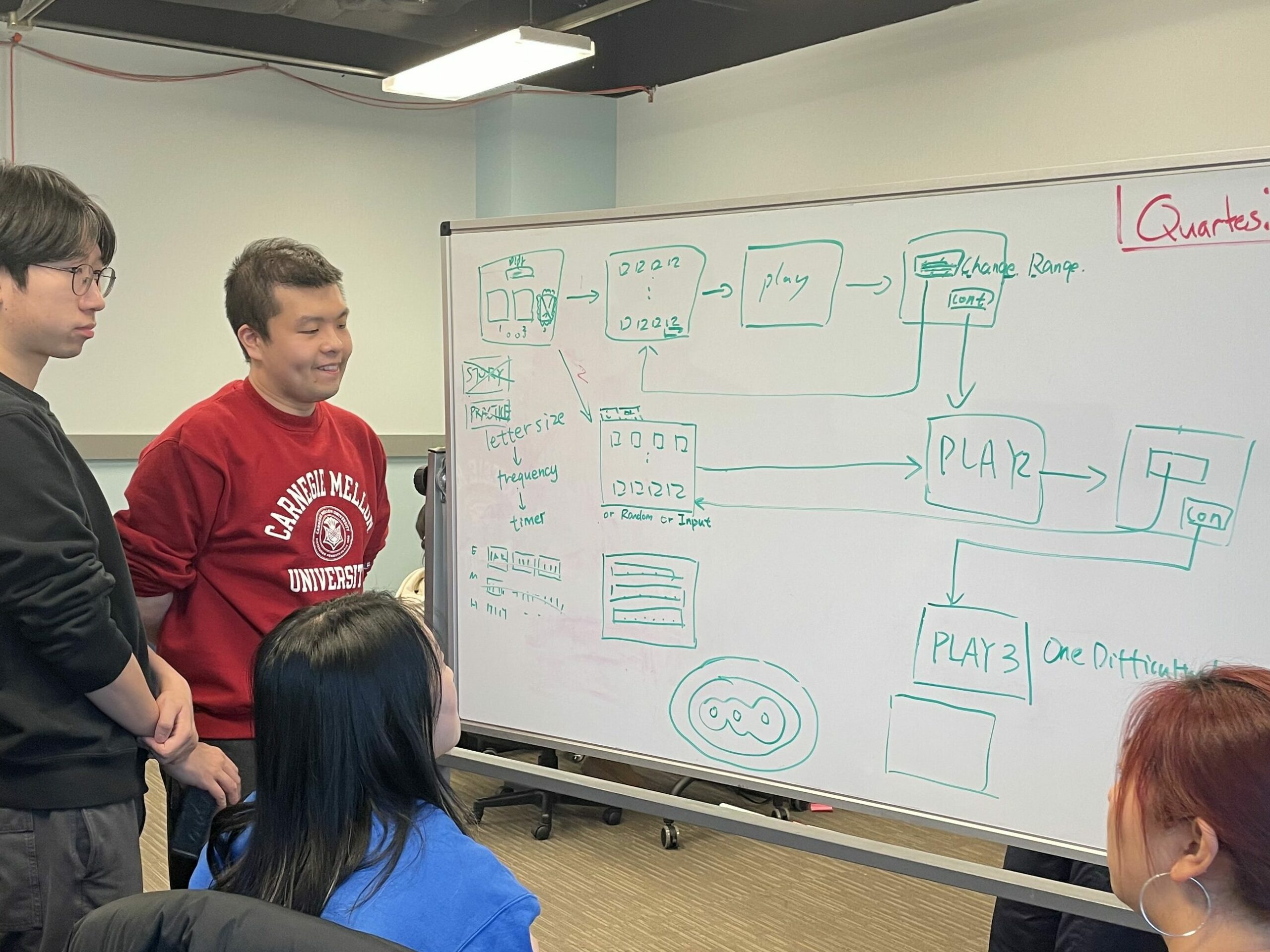
Sign Language Learning Session
After our meeting on Thursday, we had some discussion on how to sign certain letters. Then we decided to follow a YouTube video and revisit all the letters again which gave us a clearer idea of each letter.
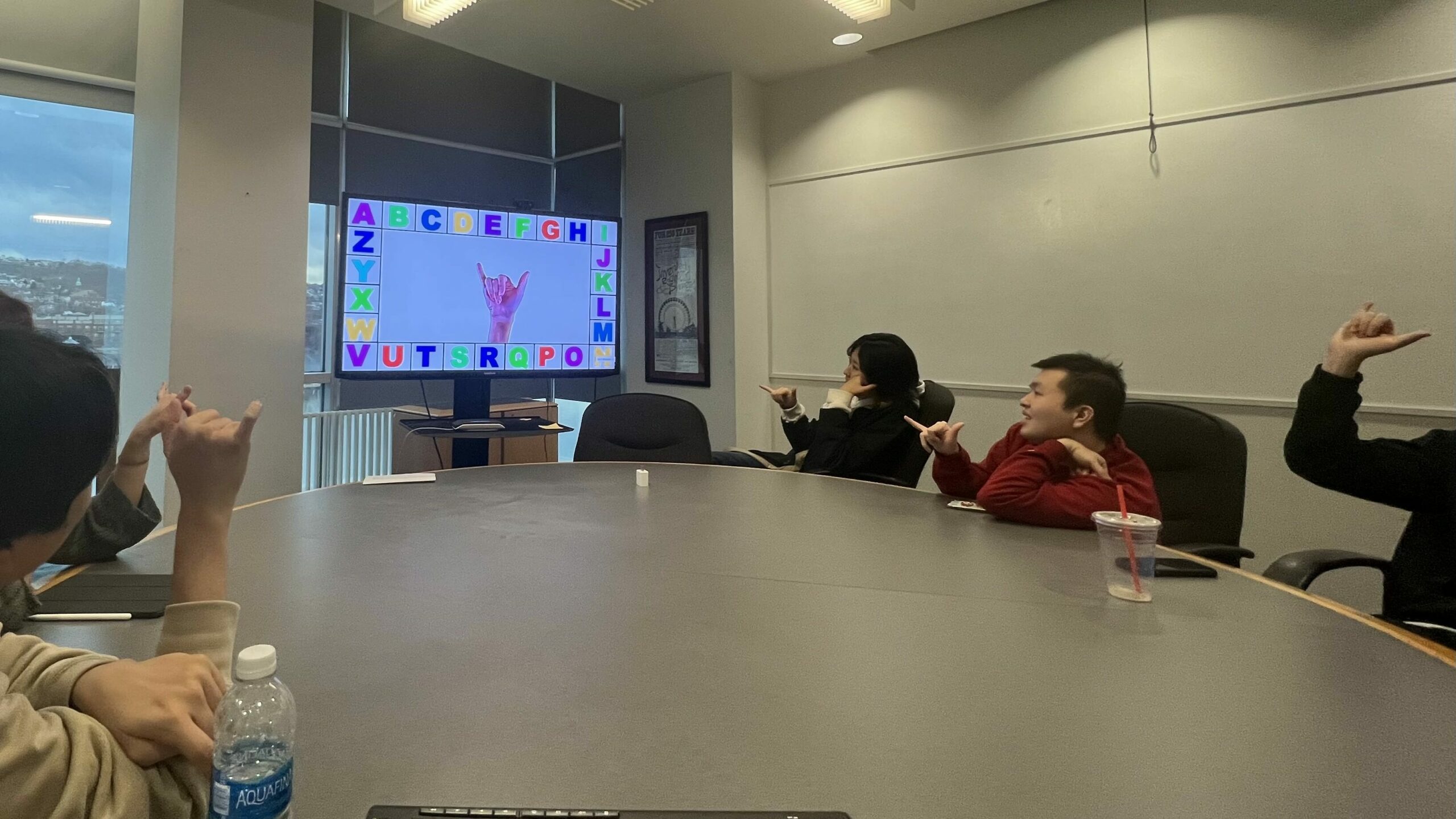
Project Metrics
Primary Metrics:
- 5 – Gameplay / Interactivity (Flow, Mechanics, Progress Curve, Immersion, Engagement, UX)
- 4 – Technology – Hardware/Software (Functionality, # of Known Bugs, Architecture)
- 4 – Transformational Content Accuracy (Education, Health, Science)
Secondary Metrics:
- 3 – Client Requirements (Defining, Meeting, Communicating)
- 3 – Effectiveness (Goals, Intrinsic, Assessment, Evaluation)
- 3 – Playtesting (Explore, Refine, Prove)
- 2 – Documentation / Archive (Organized, Research, Design)
- 2 – Innovation (Goals, Thesis, Connections, Problem Solving)
- 2 – Art Style (Aesthetics, Environments, Characters, UI)
- 1 – Prototyping (Critical, Iteration, Variation)
- 1 – Audio (Music, Sound Effects, Voice Over)
- 1 – Quality Assurance (Hardened, Robustness, Code Review)
- 1 – Storytelling / Writing (Character, Relationship, Objective, Where, Theme, Dialogue, Tension, Surprise, Emotional Goal)